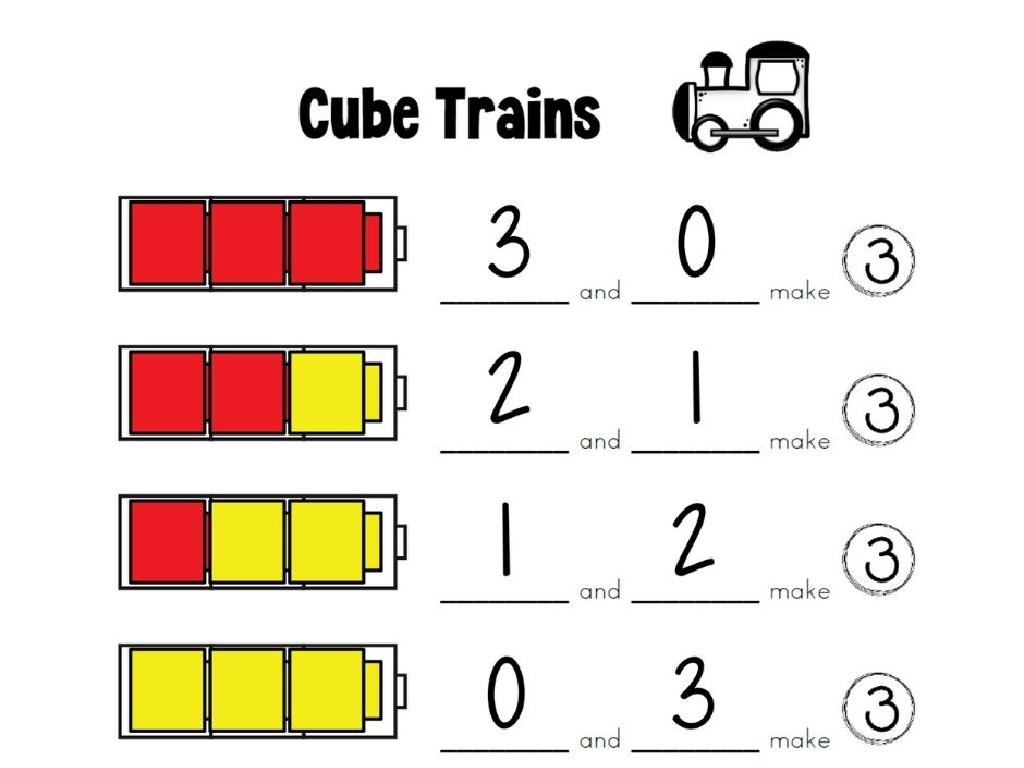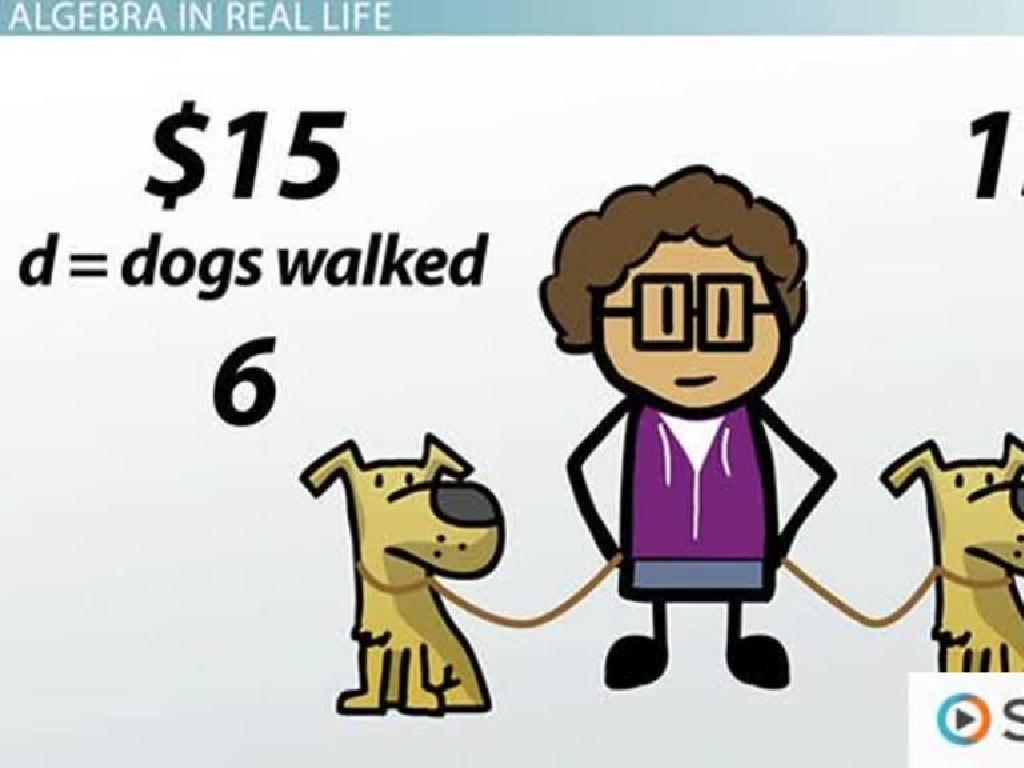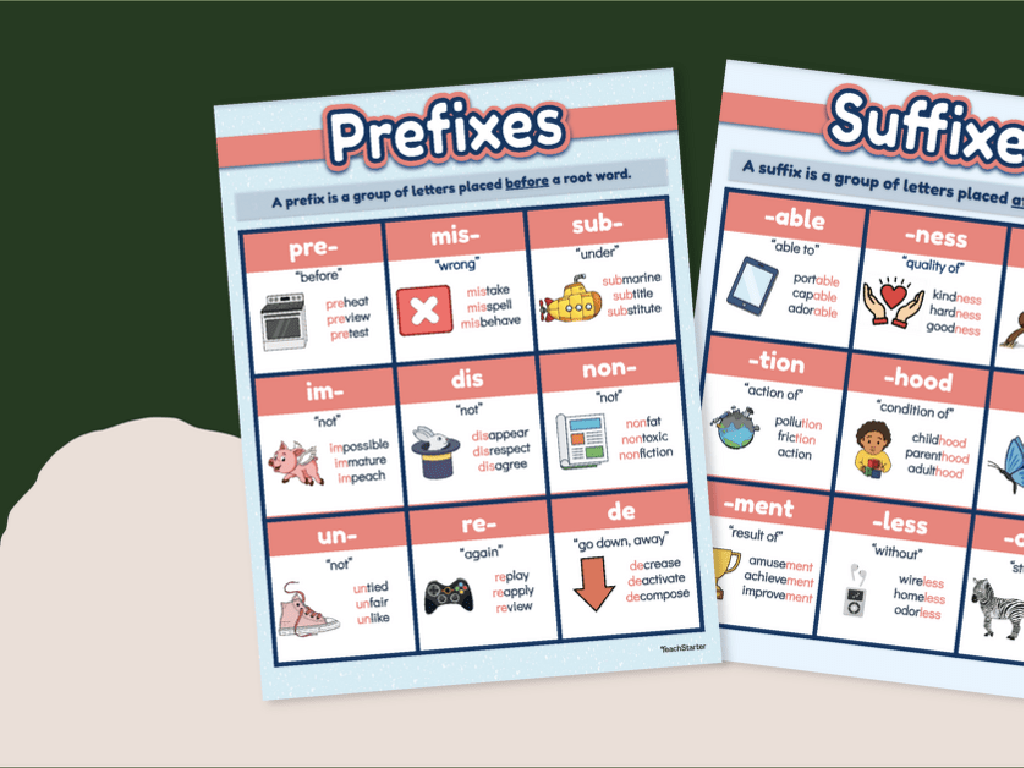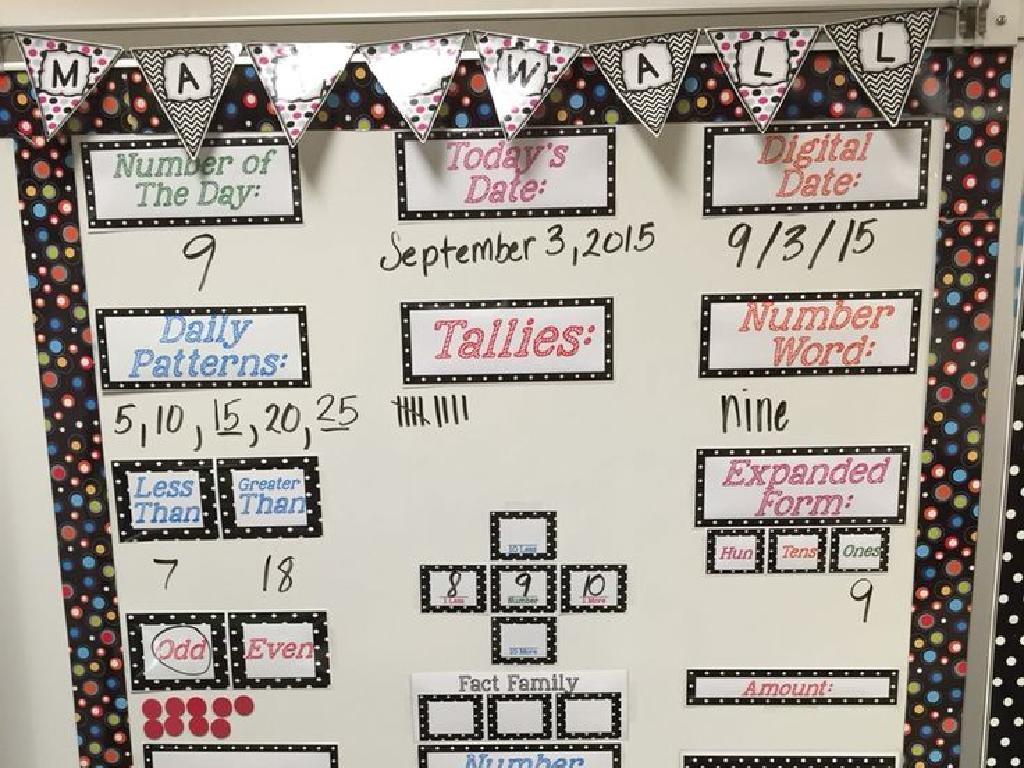Form And Use The Irregular Past Tense: Set 1
Subject: Language arts
Grade: Fourth grade
Topic: Identify The Irregular Past Tense
Please LOG IN to download the presentation. Access is available to registered users only.
View More Content
Introduction to Irregular Past Tense
– Understanding Past Tense
– Past tense tells us the action happened before now.
– Regular vs. Irregular Verbs
– Regular verbs end in ‘ed’, irregular verbs don’t follow a set pattern.
– Exploring Irregular Past Tense Set 1
– Words like ‘go’ become ‘went’ and ‘buy’ becomes ‘bought’.
– Practice with examples
– We’ll use sentences to learn how these verbs change.
|
This slide introduces the concept of past tense and the difference between regular and irregular verbs. Emphasize that past tense verbs are used to describe actions that have already happened. Regular verbs typically just add ‘ed’ to the base form, but irregular verbs change in unique ways, which can be challenging to remember. Set 1 includes common irregular verbs that students are likely to encounter in their reading and writing. Provide examples and encourage students to come up with their own sentences using the irregular verbs from Set 1 to reinforce their understanding.
Mastering Irregular Past Tense Verbs
– Irregular verbs break the rules
– Examples: ‘go’ becomes ‘went’
– Unlike ‘walk’ to ‘walked’, ‘go’ doesn’t add ‘-ed’
– ‘Buy’ changes to ‘bought’
– Just like ‘buy’ to ‘bought’, no ‘-ed’ at the end
– Some verbs never change: ‘set’
– ‘Set’ stays the same in past tense, no change
|
This slide introduces students to the concept of irregular verbs, which do not follow the standard pattern of adding ‘-ed’ to form the past tense. Provide examples of common irregular verbs and highlight that some verbs, like ‘set’, remain the same in both present and past tense. Encourage students to think of other verbs they know and discuss whether they are regular or irregular. Use engaging activities such as matching games or fill-in-the-blank sentences to help them practice and memorize these irregular forms. The goal is for students to recognize and use irregular past tense verbs correctly in their writing and speech.
Common Irregular Verbs in Past Tense
– Understanding irregular verbs
– Verbs that don’t follow regular rules
– ‘Speak’ changes to ‘Spoke’
– Use ‘spoke’ when talking about past speaking
– ‘Break’ becomes ‘Broke’
– Instead of ‘breaked’, we say ‘broke’ for past
– ‘Drive’ turns into ‘Drove’
– ‘Drove’ is the past tense of ‘drive’, not ‘drived’
|
This slide introduces students to irregular verbs, which are verbs that do not follow the standard rule of adding ‘-ed’ to form the past tense. Start by explaining that irregular verbs must be memorized because they don’t have a set pattern. Provide examples with ‘speak’, ‘break’, and ‘drive’, showing their irregular past tense forms ‘spoke’, ‘broke’, and ‘drove’. Encourage students to think of other verbs that might be irregular and share them with the class. This will help them understand that language can have exceptions to rules, and they need to practice these to become familiar with irregular verb forms.
Irregular Past Tense: Using ‘Broke’
– Irregular past tense usage
– Past tense without ‘-ed’
– Example: ‘I spoke to my friend’
– ‘Spoke’ is past of ‘speak’
– Activity: Create a sentence with ‘broke’
– Use ‘broke’ in your own sentence
|
This slide introduces the concept of irregular past tense verbs to the students, which do not follow the regular ‘-ed’ ending pattern. Start by explaining that verbs like ‘speak’ change to ‘spoke’ in the past tense. Provide the example sentence to illustrate the use of ‘spoke’. For the activity, ask students to create their own sentences using the irregular past tense verb ‘broke’, which is the past tense of ‘break’. Encourage creativity and ensure they understand the context in which ‘broke’ is used. This exercise will help solidify their understanding of irregular verbs in a fun and interactive way.
Irregular Past Tense: Tricky Verbs
– Some verbs stay the same
– ‘cut’ and ‘set’ don’t change
– Both ‘cut’ and ‘set’ are the same in present and past tense
– Practice using these verbs
– Try writing sentences using ‘cut’ and ‘set’ in the past
– Remember: Consistency is key
|
This slide focuses on the irregular verbs that do not change form from present to past tense. Highlight to the students that while many verbs do change in the past tense, some, like ‘cut’ and ‘set’, remain the same. Encourage them to practice by writing sentences or creating short stories using these verbs in the past tense. Emphasize the importance of practice in mastering these exceptions. You can suggest activities like peer-reviewing each other’s sentences for correctness or creating a classroom wall of sentences using these tricky verbs correctly.
Practice Time: Irregular Past Tense Matching Game
– Engage in a matching game
– Connect present to past tense
– Find pairs like ‘go’ and ‘went’
– Discover irregular past forms
– Some verbs don’t follow regular rules
– Get set for a fun challenge
|
This slide introduces a classroom activity designed to help students learn irregular past tense verbs through a matching game. The game will involve cards with present tense verbs that students will match with their irregular past tense counterparts. For example, ‘go’ matches with ‘went’, ‘buy’ with ‘bought’, etc. This interactive approach helps students memorize irregular forms in a playful context. Prepare sets of cards in advance, and consider working in pairs or small groups to encourage collaboration. After the game, discuss any challenging matches and reinforce the correct past tense forms.
Class Activity: Story Time with Irregular Past Tense Verbs
– Write a short story using 5 irregular verbs
– Use verbs like ‘sang’, ‘taught’, ‘went’, ‘gave’, ‘felt’
– Exchange stories with a classmate
– Discuss the stories with your partner
– Talk about the verbs you both used
– Volunteer to share your story with the class
|
This activity is designed to help students practice using irregular past tense verbs in a fun and interactive way. Encourage them to think creatively and come up with a story that naturally incorporates at least five different irregular past tense verbs. After writing their stories, students will pair up to read each other’s work, providing an opportunity to see how their peers use language differently. This peer review process also helps reinforce their learning. Finally, select a few volunteers to share their stories with the class, which will help build confidence in their storytelling and public speaking skills. Possible verbs to use include ‘saw’, ‘made’, ‘went’, ‘had’, ‘took’, ‘felt’, ‘kept’, ‘left’, ‘said’, and ‘taught’.
Wrapping Up: Irregular Past Tense
– Congrats on learning irregular past tense!
– Homework: 10 sentences with irregular verbs
– Use verbs like ‘sang’, ‘taught’, ‘went’
– Practice makes perfect
– Enjoy using new verbs!
– Try to make funny or interesting sentences
|
Today’s lesson focused on understanding and using irregular past tense verbs, which do not follow the standard ‘-ed’ ending rule. For homework, students are tasked with writing 10 original sentences that incorporate irregular past tense verbs. This will help reinforce their understanding and give them a chance to apply what they’ve learned in a creative way. Encourage them to have fun with the assignment by using the verbs in different contexts, perhaps by writing a short story or dialogue. Remind them that practice is key to mastering these verbs, and the more they use them, the more natural they will become in their writing and speech.






